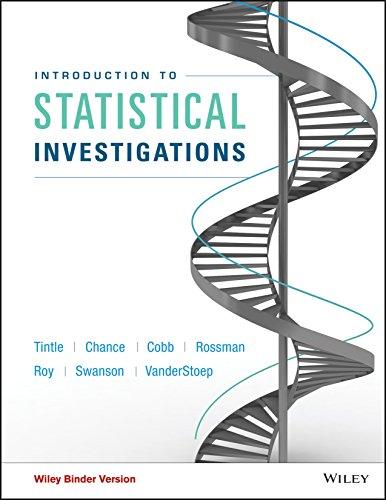Question
Task 1: Identify data type (3 Marks) Identify each variable (i.e., Sex, Smoke and GPA) in the subset whether it is categorical nominal, categorical ordinal,
Task 1: Identify data type (3 Marks) Identify each variable (i.e., Sex, Smoke and GPA) in the subset whether it is categorical nominal, categorical ordinal, quantitative discrete or quantitative continuous. Task 2: Show the difference of GPA by Sex (10 Marks) a. Construct side-by-side boxplots for the GPA variable by the Sex variable (i.e., the two groups are female students and male students). (4 Marks) b. Calculate the Q1, Q2, Q3, interquartile range and whisker limits for the GPA variable of the female and male groups separately. (4 Marks) c. Use the respective median and inter-quartile range to compare the data position and variability or spread of GPA for the female and male groups separately. (2 Marks) [Hint: Refer to "Measures of Central Tendency" Lecture, slides 17 to 19 for the calculation of Q1 Q2 and Q3 as well as the whisker limits.] Task 3: Calculate the percentage of smoker by Sex (7 Marks) a. Make a contingency table to show student's Sex frequencies by the Smoke variable (i.e., a smoker or not). (4 Marks) b. Calculate and compare the percentage of smoker in the female students and the male students separately. (3 Marks)
Conclusion: (5 marks) From the Task 2, you should have some idea of the difference of the distribution of GPA for the female students and male students. Also, the result from Task 3 would indicate which group has a higher smoker percentage. Write a short report summarising your main findings.
The data for the calculations are given below:
| Sex | Smoke | GPA |
| M | No | 2.55 |
| F | No | 2.77 |
| F | No | 3.7 |
| F | No | 3.86 |
| F | No | 3 |
| M | No | 2.5 |
| M | No | 3.3 |
| F | No | 2.68 |
| M | No | 3.51 |
| F | No | 3.1 |
| M | No | 2.94 |
| M | No | 3 |
| F | No | 3.6 |
| F | No | 4 |
| M | No | 3.4 |
| M | No | 3.1 |
| F | No | 3.25 |
| F | No | 2.4 |
| F | No | 3.25 |
| F | No | 2.1 |
| F | No | 3.83 |
| M | No | 2.7 |
| F | No | 3.13 |
| M | No | 3.6 |
| M | No | 3.88 |
| M | No | 2.1 |
| F | No | 3 |
| F | No | 3.4 |
| M | No | 2.6 |
| M | No | 2.9 |
| F | No | 3.1 |
| F | No | 2.8 |
| M | No | 2.27 |
| F | No | 2.8 |
| M | No | 3.02 |
| F | No | 3.2 |
| F | No | 3 |
| F | No | 2.9 |
| M | No | 2.72 |
| F | No | 3.3 |
| F | No | 3.5 |
| F | No | 3.69 |
| M | No | 3.31 |
| M | No | 2.4 |
| M | No | 2.82 |
| F | No | 3.57 |
| M | No | 2.2 |
| M | No | 2.85 |
| F | No | 3.2 |
| M | No | 2.72 |
| F | No | 2.6 |
| M | No | 3.1 |
| M | No | 3.77 |
| M | No | 3.6 |
| M | No | 3.3 |
| F | No | 3.13 |
| M | No | 3 |
| F | No | 3.5 |
| F | No | 4 |
| M | No | 3 |
| F | No | 2.8 |
| M | No | 3.5 |
| F | No | 2.75 |
| M | No | 3.36 |
| F | No | 3.5 |
| F | No | 3 |
| F | No | 3.3 |
| M | Yes | 2.2 |
| M | Yes | 2.8 |
| M | Yes | 3.66 |
| M | Yes | 2.25 |
| M | Yes | 3.3 |
| F | Yes | 3.25 |
| M | Yes | 2.83 |
| M | Yes | 2.3 |
Step by Step Solution
There are 3 Steps involved in it
Step: 1

Get Instant Access to Expert-Tailored Solutions
See step-by-step solutions with expert insights and AI powered tools for academic success
Step: 2

Step: 3

Ace Your Homework with AI
Get the answers you need in no time with our AI-driven, step-by-step assistance
Get Started


